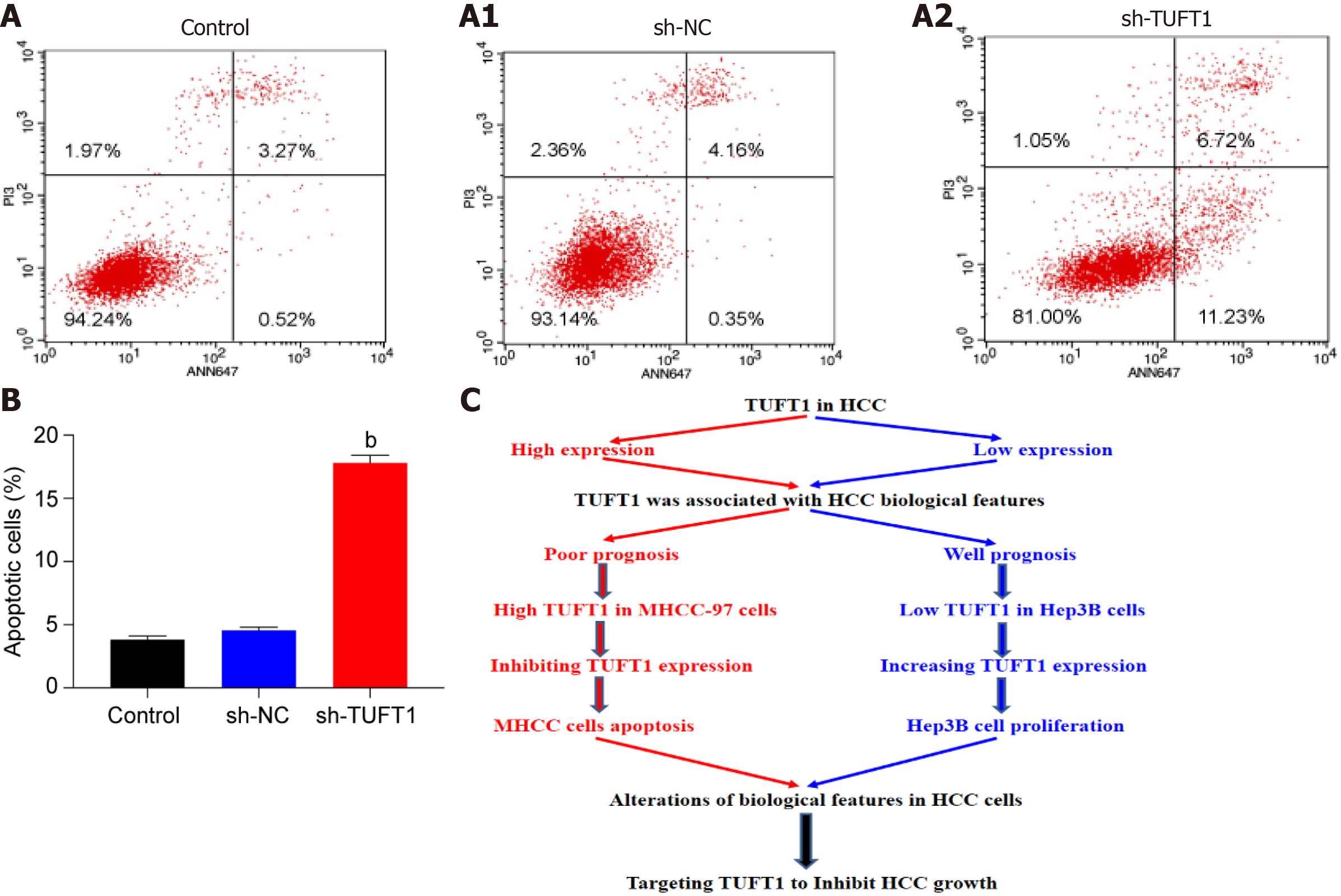Copyright
©The Author(s) 2021.
World J Gastroenterol. Jun 21, 2021; 27(23): 3327-3341
Published online Jun 21, 2021. doi: 10.3748/wjg.v27.i23.3327
Published online Jun 21, 2021. doi: 10.3748/wjg.v27.i23.3327
Figure 6 Possible mechanism of tuftelin 1 expression in hepatocellular carcinoma cells progression.
A: The MHCC-97H cells were transfected with the tuftelin 1 (TUFT1)-short hairpin RNA (sh-RNA)3 plasmid, and the apoptotic cells in the sh-TUFT1 group (A2) were increased more than those in the blank control (NC) (A) or negative sh-RNA for tuftelin 1 mRNA (sh-NC) group (A1); B: The histograms of the apoptotic cells among the different groups, the rate of the MHCC-97H cell apoptosis in the sh-TUFT1 group was significantly higher (bP < 0.001) than those in the NC or sh-NC group. Data are presented as mean ± standard error of the mean of at least three independent experiments; C: Speculation of possible mechanisms of TUFT1 promotion of the progression of hepatocellular carcinoma (HCC). Aberrant TUFT1 activation promoted the proliferation and metastasis via anti-apoptosis of HCC cells.
- Citation: Wu MN, Zheng WJ, Ye WX, Wang L, Chen Y, Yang J, Yao DF, Yao M. Oncogenic tuftelin 1 as a potential molecular-targeted for inhibiting hepatocellular carcinoma growth. World J Gastroenterol 2021; 27(23): 3327-3341
- URL: https://www.wjgnet.com/1007-9327/full/v27/i23/3327.htm
- DOI: https://dx.doi.org/10.3748/wjg.v27.i23.3327









